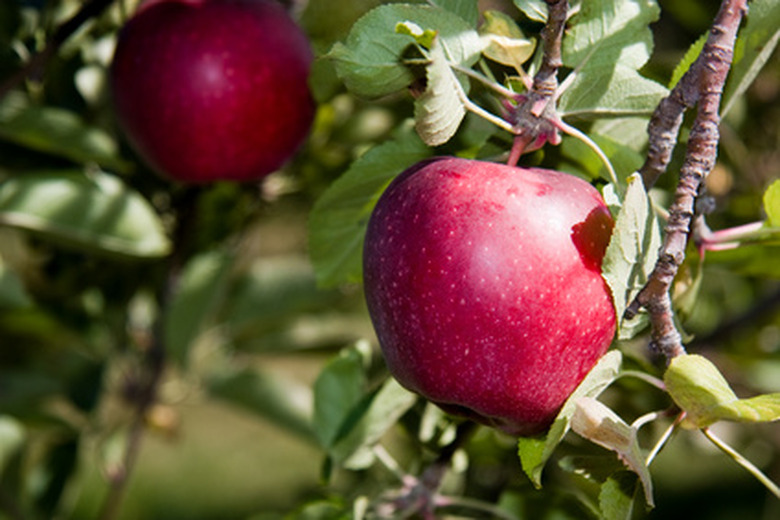How To Treat Rust On Fruit Trees
Only certain varieties of fruit trees are susceptible to rust, namely apple and pear trees. This disease comes from a fungus named Gymnosporangium. It can cause unattractive spots on the fruit trees that lead to leaf and fruit drop. Treating rust on fruit trees requires a combination of methods. If you catch the disease early, and eliminate it, your tree should survive the disease.
Step 1
Confirm the existence of rust on your fruit trees so you can treat it properly. Examine the leaves, looking for yellow or orange spots on the top side of the leaf. The underside of the leaf will show wart-like growths with spores growing out of them. Sometimes the fruit of the tree will show similar symptoms.
- Only certain varieties of fruit trees are susceptible to rust, namely apple and pear trees.
- The underside of the leaf will show wart-like growths with spores growing out of them.
Step 2
Prune off infected leaves and branches in the winter with pruning shears. Clear out the diseased material and throw it away. This will get rid of the spores that spread the disease. Clean your pruning shears with rubbing alcohol to disinfect them afterward.
Step 3
Look for any junipers or cedars in your yard with bright orange, gelatinous growths in spring. Rust requires an alternate host to infect the fruit trees. Pick off these growths before they have a chance to germinate and spread.
- Prune off infected leaves and branches in the winter with pruning shears.
- Pick off these growths before they have a chance to germinate and spread.
Step 4
Spray the fruit tree with a fungicide containing ferbam or zineb when it blooms. Make sure the fungicide lists your fruit tree before using it. Spray again when most of the flower petals have fallen off the tree and again 10 days later.
Step 5
Repeat this cycle until the fruit tree shows no sign of disease.
Fruit Trees That Work Well Together
All types of fruit trees grow well together. Spacing for good canopy development, easy picking, good air circulation and size compatibility are important considerations in choosing fruit trees for the backyard orchard. High-density planting schemes use a 10 to 15 foot area for three to four fruit trees. Compatible planting of backyard fruit tree varieties can provide fruit all summer long. Each type of fruit tree has individual varieties that come to harvest in early summer, mid-summer or late summer and fall. Peach trees that grow well together for a long harvest include "Babcock Berkeley," "Baby Crawford," and "Peregrine England" varieties. " All cultivars are hardy to USDA zones 8 to 10. Trees in a neighboring yard may do the job. Bee activity is essential to successful pollination. Many home gardeners plant bee-friendly flowers such as lupine, goldenrod and asters to attract the bees needed for pollination.
- Spray the fruit tree with a fungicide containing ferbam or zineb when it blooms.
- Many home gardeners plant bee-friendly flowers such as lupine, goldenrod and asters to attract the bees needed for pollination.
Things Needed
- Pruning shears
- Rubbing alcohol
- Fungicide
